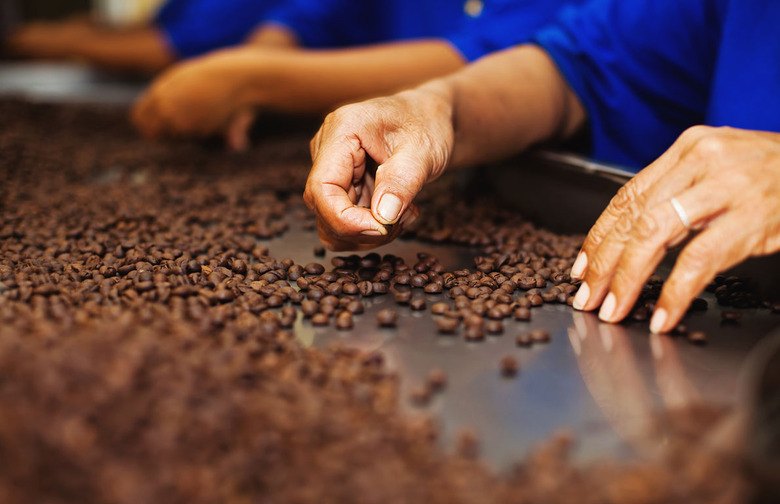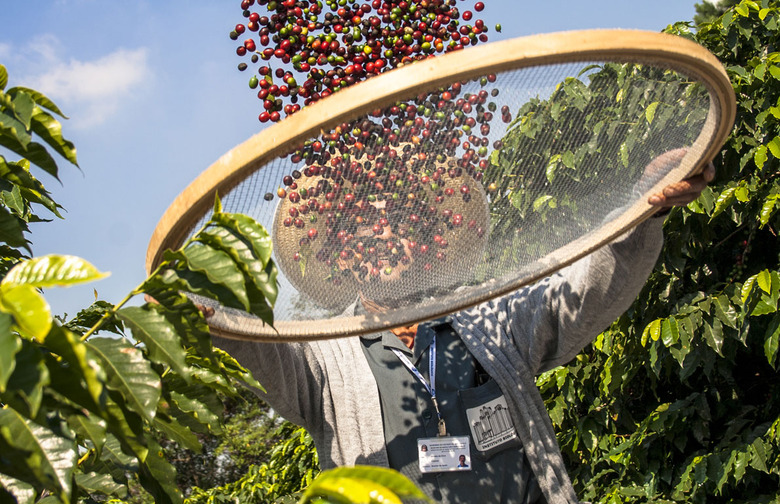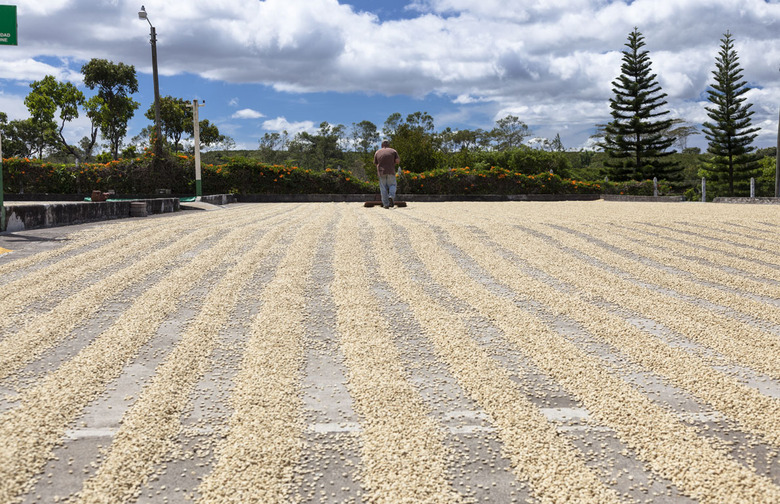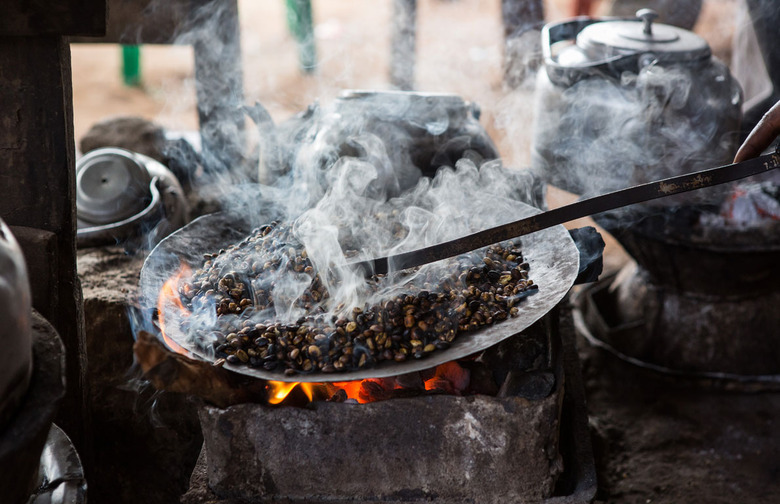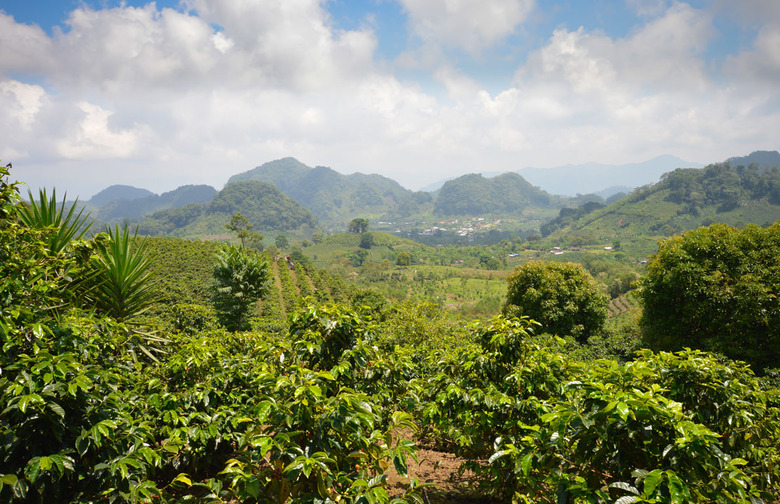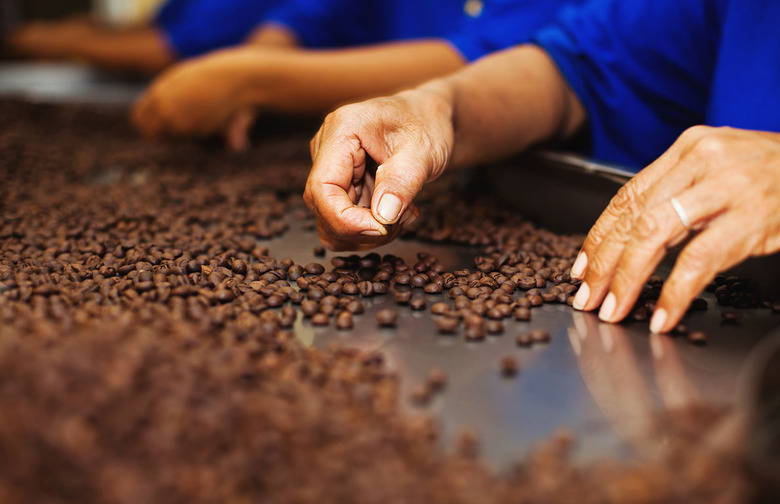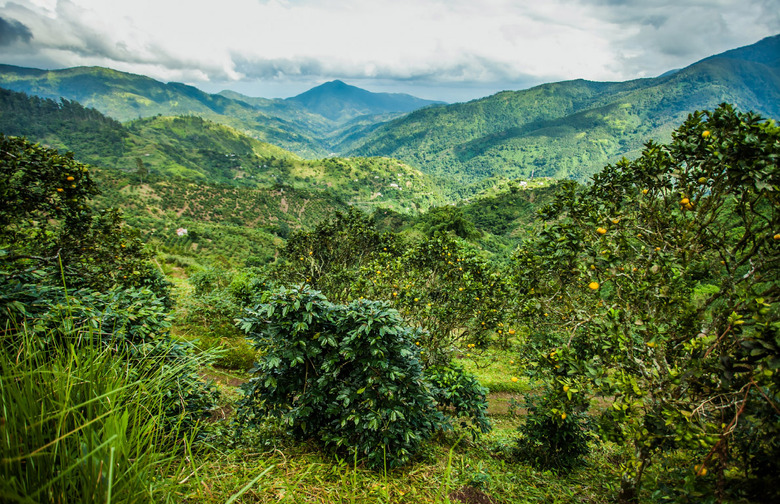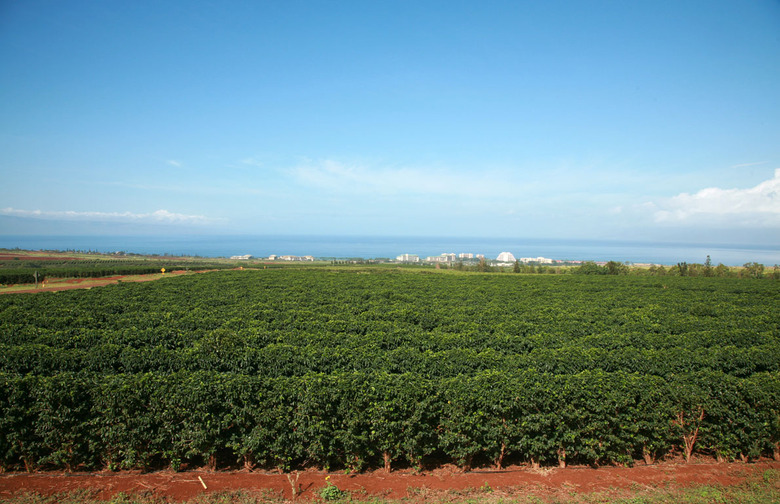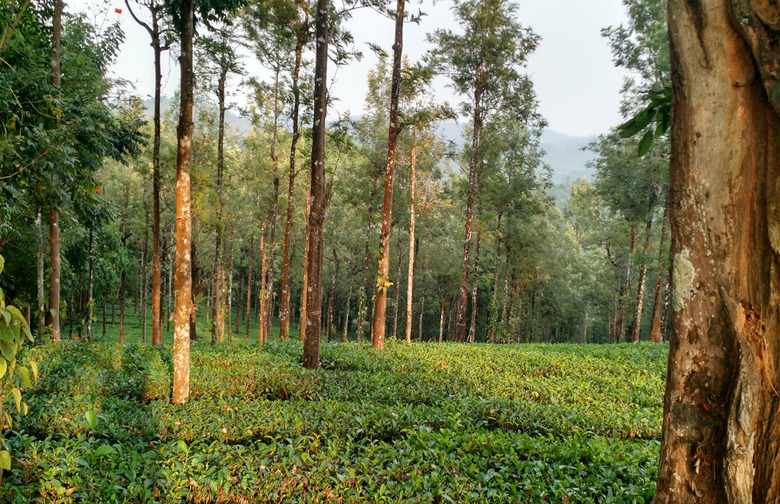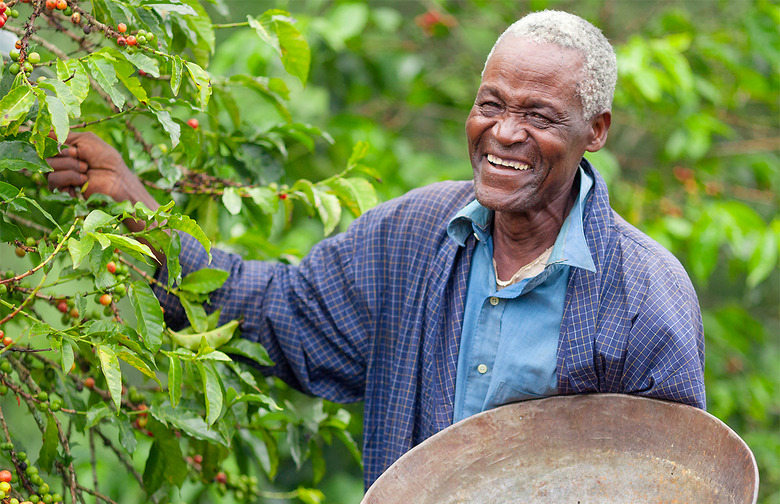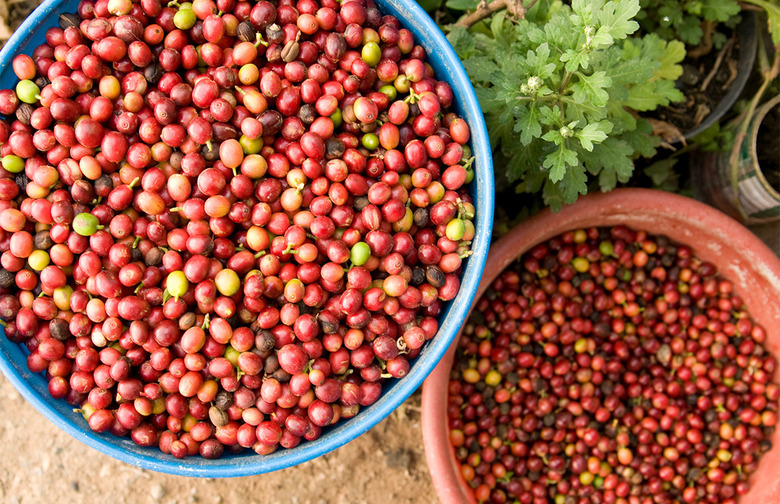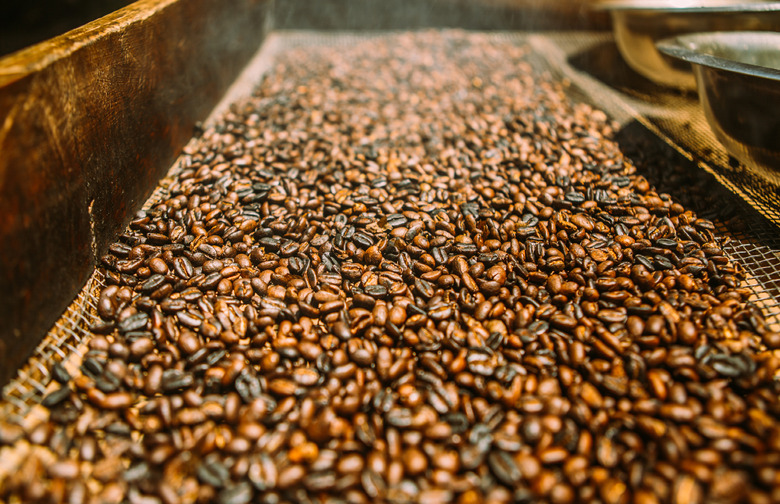Where The World's Best Coffee Comes From: 12 Regions You Should Know
As with the grapes used for wine, the characteristics of the beans that make coffee are highly dependent on the temperature and conditions in which they are grown. As artisanal roasts grow in popularity, customers are faced with more and more complex coffee menus — not just menus that tell you the different prices of a latte or cappuccino, but menus that offer the same drink made using beans from many different origins. So, why order a Kenya over a Costa Rica? Read about the differences in taste of coffee from nine different regions to find out.
Brazil
Brazil is the world's largest producer of coffee. In 2014, Brazil exported 45 million 60-kilogram bags of coffee beans — two times the export of the entire African continent. What makes it stand apart? Brazilian coffee is known for its creamy body and low acidity, and it also boasts some chocolate and caramel notes. Both robusta and arabica species are grown there.
Colombia
Colombia earned its reputation for high-quality beans long ago, thanks to its tropical temperatures and high altitude. Colombian coffees are medium to low in acidity and body, with nutty undertones.
Costa Rica
Costa Rica produces only wet processed (or "washed") beans, meaning that the fruit covering the beans is removed before they are dried. Like other Central American coffees, Costa Rican coffee tends to have medium body and sharp acidity, enough to balance flavors like honey or toasted nut, so the coffee is never too sweet or simple-tasting.
Ethiopia
While thousands of varieties of coffee beans grow in Ethiopia, which is the world's oldest coffee-growing region, in general, the coffee tends to be bold and full-bodied, although flavors differ according to how the bean is processed. Ethiopian beans come both natural (where the fruit covering the bean is dried before being removed) and washed. According to Serious Eats, natural beans tend to be fruity and wine-like, while washed coffees tend to taste floral and tea-like, so you might detect hints of berry in a natural bean or hints of jasmine in a washed variety.
Honduras
Coffee production has helped the economy of this Central American country grow immensely in the past 25 years, according to The Telegraph. There are now around 110,000 coffee producers registered in the country, 92 percent of which are classified as small producers. So when it comes to artisanal coffee, Honduran single-origins are very popular. Cheryl Kingan, coffee buyer for roastery and coffee shop chain Café Grumpy, says, "The two producers we work with live on opposite sides of a mountain, and though they also grow the same varieties, one has a very special golden raisin quality, and the other tastes of red currant and hazelnut."
Indonesia
Indonesian coffees make up one of the more interesting coffee profiles from around the world; coffees from the Sumatra region have developed a devoted fan base for their smoky and earthy — almost spicy — qualities. (Interestingly, one of our slang names for coffee, "java," comes from the fact that the Indonesian island of Java is a noted coffee-producing region.) These coffees tend to have less brightness and acidity, and are generally served as a dark roast, which means that the beans are roasted at a higher temperature and have less caffeine. This process, along with the characteristics of the beans, makes Indonesian coffee varieties tread close to tasting burnt. The most notorious Indonesian coffee, kopi luwak, is made with beans that have been eaten and then excreted whole by the Asian palm civet; the process is said to add a unique and desirable flavor to the beans. The coffee is rarely seen in the U.S., which may be just as well, both because it is frighteningly expensive (typically more than $300 a pound) and because animal rights groups have revealed that the civets kept for processing the coffee are often mistreated.
Jamaica
Jamaican Blue Mountain coffee is one of the world's most sought-after specialty coffees, as it needs to be certified by the government of Jamaica before being sold as such. Exports are highly regulated. These beans are traditionally grown in the high altitudes (starting at 3,000 feet) of the Blue Mountains in central Jamaica, and have a smooth, mellow flavor. The coffee miraculously manages to taste pronounced in its mildness, which might be why a 16 ounce bag of it costs around $58.
Hawaii
While Hawaii cultivates a few different varieties of coffee, it is most notable for its beans from the Kona region on the Big Island. Grown on the slopes of the Hualalai and Mauna Loa volcanos, Kona coffee is immensely popular thanks to its buttery finish, deep aromatics, and medium body. Starbucks recently added it to their collection, but there's nothing quite like drinking a cup on the beaches of Hawaii's big island.
India
We don't see too many beans from India in American coffee shops, and that's because coffee beans produced in India tend to be sweeter and less acidic than coffees produced in Central America or Africa. Europeans, according to The Little Book of Coffee Law, tend to favor the low-toned, subtle, and rounder notes of Indian coffee.
Kenya
Think of Kenyan coffee as coffee's equivalent of sour candy. With flavors of berries and currants, it leaves a lingering tingle on your lips. Most of Kenya's coffee is not grown in shade, which is one of the many factors that contribute to its distinctive acidity.
Mexico
Mexico ranks as one of the largest coffee-producing countries in the world, particularly in the states of Veracruz, Oaxaca, and Chiapas. While its coffee has medium acidity and cherry undertones, it is a tad sharper than Central American coffee.
Tanzania
While you may not find too many beans from Tanzania on the shelf at the moment, that might change very soon. Tanzania is where you'll find many peaberries, a type of coffee bean that's coveted for its pea shape, which makes it easier to roast. According to coffee journalist Erin Meister, "A peaberry is a natural mutation of the coffee bean inside its cherry. Normally, coffee beans grow two to a fruit, flat against each other like halves of a peanut, but a funny thing happens in about 5 percent of the world's coffee, and a bean is born an only child." While some claim there is no difference between peaberries and normal coffee beans, others claim that these single beans are distinctly sweeter.
